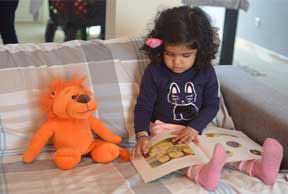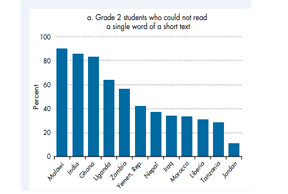1300 villages in India, nearly 24% of teachers were absent during unannounced visits
Bengaluru, Nov 19, 2018: The World Development Report 2018 (WDR 2018) was published in February 2018 which is the 40th in the series , introduced a new agenda on ‘Learning to realize education’s promise’, which is the first ever promise that has come forth devoted entirely to education. The WDR 2018 promise explores four main themes –
- Education’s promise
- The need to shrine a light on learning
III. How to make schools work for leaders
- How to make systems work for learnings
According to Chandana Dutta, a professor of English Literature at Calcutta University,” If you define education in the words of Swami Vivekananda’. Education is the manifestation of the divinity already in man’ which does not mean only gathering certificate. The light of learning must shine on one and all but there is a basic difference between being literate and being educated. Third world countries need to work on literacy while the quality of education needs to improve in higher education.”
She added “school education should be more useful and need a base which must be relevant to daily life”.
The National Institute of Ranking Framework 2018 was released in nine categories, which included overall universities, colleges. According to the NIRF rankings, IISc Bengaluru ranks first in overall category. Bengaluru is one of the rising states in the field of education.
Founder of Better Plus Education, Rahul Adhikari says,” The world is changing at a fast rate with technology and automation taking over skills of empathy, creative problem solving, collaboration, etc., which will be the most important skills for anyone to be successful. However, the most exciting education systems have a narrow focus on technical skills of mathematics or computers or commerce,which leaves the students unprepared to deal with the complexities of the changing world.
‘’ What is needed in schools are classes that closely resemble the modern day workplace (one where people move between different roles and projects), helping them acquire skills of empathy, teamwork, and cooperation that are essential for them to navigate the new world. We need programs in schools that focus on inculcating such skills”.
Debkonya Ghosh, a master’s student in Calcutta University for English Literature stated, “Education system in India is extremely eroded in the sense that nothing happens without an excess of money, and even then there is no assurance of the fact that your ward is learning something worthwhile. Government schools are so degraded that nobody with even a little bit of money wants to send their children there. “
She talked about how one has to spend so much to just pass the 12th standard, and to get admission in a good college without being drowned in debt even before they start their career.
Rahul Jain, a Chartered Accountant and enjoying fatherhood of his three and a half year old daughter mentioned that “Education is the foundation which every child needs in order to have a good future and by education I would say be it the conventional school or college or home schooling, which shall soon become more prevalent and acceptable. Education’s promise should be to enable an individual to enlighten himself with the practicalities of the world and also to enable one to prepare oneself to chart the correct course of future for self.”

He commented” The problem with the Indian education system is that it’s still following the age-old educational pattern and has not evolved with time. The primary, or for that matter the conventional degree studies do not prepare a student for the practical aspects of the world, be it for job, industry or entrepreneurship. But yes, slowly things are changing and hope the pace of change increases. For instance, my daughter is learning fast with the new systems of teaching them through phonetics which has enables her to recognise the alphabets with the sound of the word and even pronounce correctly at such a young age. New visual ways of education are coming up which is helpful in gaining the interest of the child and enabling them to understand the concepts better.”
According to the WDR Report 2018, less than 28% of students in grade 3 could master double-digit subtraction. It also mentions that in Bihar in India, only 10.5% of tested public school teachers are able to solve a three-digit division problem and show the steps correctly.
The report also states that 1300 villages in India, nearly 24% of teachers were absent during unannounced visits which was at an associate fiscal cost of US $1.5 billion a year which would turn 10 times cost effective if the absenteeism is reduced. In Uttar Pradesh, a quarter of village education committee members surveyed did not even know that they were members.
In countries like India, Indonesia, the Philippines and Thailand, equivalency programs for early school leavers improve student’s self-development, especially when programs are aligned with the formal education system. The report even states that in India, computer-assisted learning has dramatically improved learning outcomes in dedicated technology centers.





